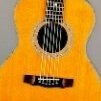Raw vs JPEG
-
Similar Content
-
- 3 replies
- 1,675 views
-
- 0 replies
- 450 views
-
A7IV firmware 3.0 raw files not recognised in Lightroom
By PCM_81,
- firmware 3.0
- lightroom
- (and 2 more)
- 10 replies
- 11,913 views
-
- 2 replies
- 4,523 views
-
- 2 replies
- 554 views
-




Recommended Posts
Create an account or sign in to comment
You need to be a member in order to leave a comment
Create an account
Sign up for a new account in our community. It's easy!
Register a new accountSign in
Already have an account? Sign in here.
Sign In Now